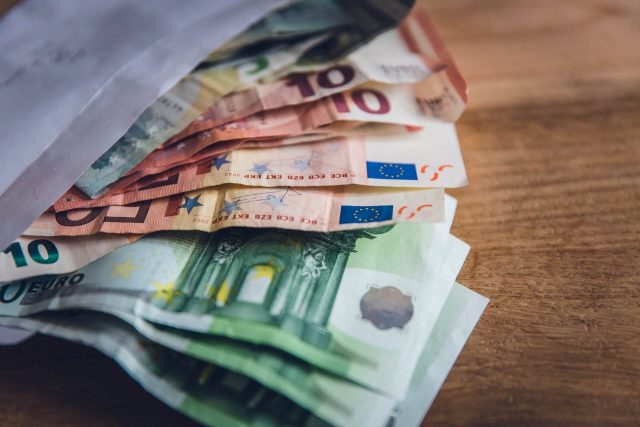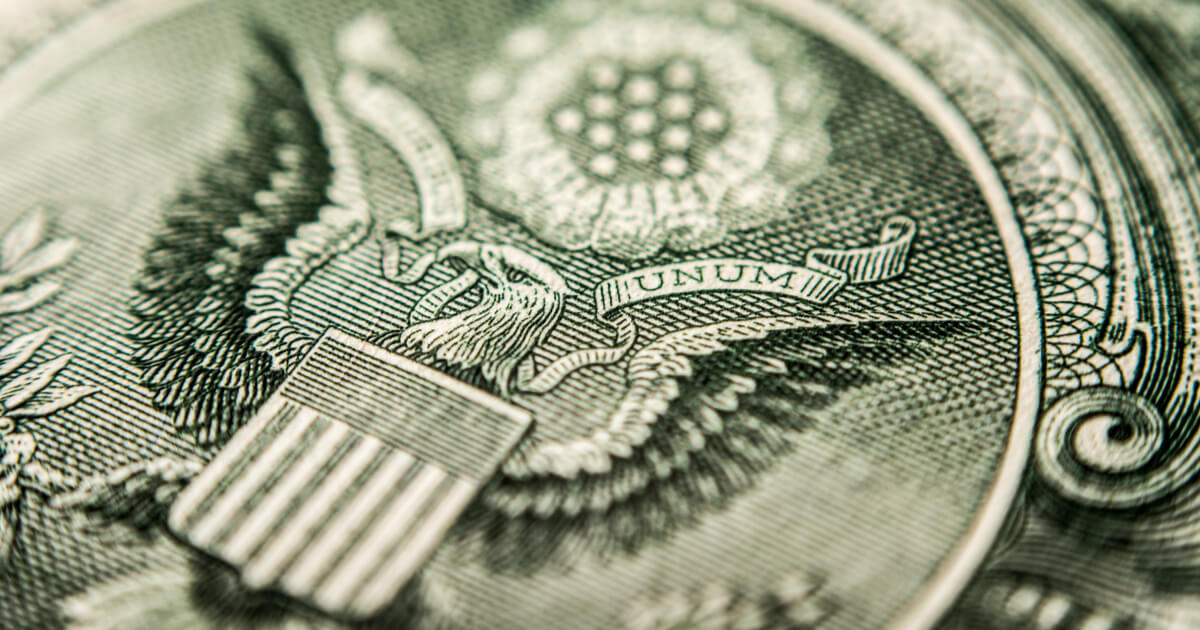
In June 2023, the world was buzzing that the United States would default on its debt. The debt ceiling was eventually raised, but the possibility of the same risks occurring in the future cannot be ruled out.
If the United States were to default on its debts, it would have immeasurable effects globally, not only on the economy but also on finance and real estate. In order to prepare for a situation where chaos is expected, it can be said that it is necessary to grasp the details of defaults and past examples.
Therefore, this article will explain defaults based on examples from Japan and other countries. We also introduce the background to the frequent awareness of debt default in the United States, and the possible impact on each industry in the event of default. It also explains the positions that investors should take. Please refer to it.
table of contents- Default means not being able to pay back the money you borrowed.
- The background to the US default
- The impact of US debt default on each industry is immeasurable
- Steps investors can take to prepare for default
- Stay up-to-date on defaults and prepare for the worst
1. Default means not being able to pay back the money you borrowed.

First, I would like to explain the keyword “default” that was the center of this turmoil.
In general, default is the failure or inability to perform an obligation without justifiable cause. Debt means an obligation to repay a debt.
There are many ways individuals and companies can default, but the primary focus of this article is sovereign default. When a nation defaults on its debts, it becomes unable to pay creditors who have publicly issued government bonds or bonds, and credit falls to the ground. .
In this respect, the more debts you have, the more difficult it will be to repay, and the more likely you are to default. However, Japan, the world’s most indebted country as a percentage of GDP, has yet to default on its debt. The discussion on that point will be discussed in detail in the next chapter.
1-1.Can Japan default on its obligations?
Japan’s debt has exceeded 1,000 trillion yen (250% of GDP) and is increasing at an astonishing rate. Around the 1990s, the debt remained between 200 and 300 trillion yen, which means that the amount of debt has expanded nearly fivefold over the past 30 years. The main reasons are the Bank of Japan’s policies, the declining momentum of factors such as population decline and economic stagnation that support debt repayment, and the increase in social security costs for pensions, medical care, childcare, and nursing care. etc.
However, Japan has not yet defaulted. On the contrary, some say that the possibility of Japan defaulting on its debt is low.
The biggest reason is that the government bonds are not denominated in foreign currencies, but issued in the original currency “Japanese yen” issued by the Bank of Japan, which is legally independent from the government. In case of emergency, it is possible to issue a large amount of currency and repay it at the cost of causing hyperinflation. In addition, most of the creditors who purchase government bonds are Japanese and domestic institutions (7.1% of the holders are overseas holders as of the end of September 2022), and the debt is completed domestically Bank of Japan According to the announcement in the quarter of 2022, household financial assets exceed 2,000 trillion yen, which is often cited as a reason that there is enough money in the country.
However, there are objections to such views. For example, if hyperinflation were to occur, the value of the Japanese yen would plummet, causing a major blow to foreign import businesses. This is fatal for Japan, which depends on imports for most of its energy and food.
Also, although debt through government bonds is completed domestically, nearly half of the government bonds are owned by the Bank of Japan. Due to its structure, it is not realistic for the Bank of Japan to continue underwriting government bonds indefinitely.
Just as the United States is on the brink of default this time, let’s keep in mind that Japan is at risk as well.
1-2. Countries that have defaulted on their debts in the past
Next, let’s take a look at some examples of countries that have defaulted on their debts in the past.
In 2009, Greek government bonds plunged after it came to light that Greece had hidden a financial deficit in the wake of a change of government. It triggered the euro’s depreciation, which in turn had some impact on the global economy, and resulted in a de facto default.
Other countries in Central and South America, such as the Dominican Republic and Ecuador, have defaulted on their debts.
The above are past examples, but as of 2023, some countries are currently on the verge of defaulting on their debts. Here are some examples from Russia and Argentina.
1-3. Countries with ongoing defaults
As of 2023, we will introduce the background and situation of Russia and Argentina, which may default on their debts.
The credit rating will be affected if default or probable default is determined. A credit rating is a rating agency such as “Moody’s Corporation,” “Fitch Ratings Limited,” and “Standard & Poor’s (S&P: Standard & Poor’s).” is determined and represented by symbols using alphabets and numbers.
Please also refer to how the credit ratings of Russia and Argentina have changed.
1-3-1.Russia
First, let me explain the situation in Russia.
The impetus for Russia to default is the economic sanctions imposed by various countries over its invasion of Ukraine. Of the several economic sanctions that have been implemented, the two that are said to have done the most damage to Russia are the exclusion from SWIFT (Society for Worldwide Interbank Financial Telecommunication SC) and the freezing of foreign exchange reserves.
SWIFT is a non-profit organization headquartered in Brussels, Belgium that provides systems that are essential for international financial transactions. Russia’s removal from SWIFT as economic sanctions for its invasion of Ukraine has left it in a situation where trade and dealings with foreign companies have become more difficult, as well as the payment of foreign debts.
Also, as part of the economic sanctions, the assets of the Russian Central Bank abroad have been frozen, making it impossible to withdraw about half of the foreign exchange reserves. Originally, foreign currency denominated bonds must be redeemed in that foreign currency. Although Russia managed to temporarily survive by paying in its own currency, the ruble, the possibility of defaulting on its debts cannot be denied as long as economic sanctions from each country continue.
As a result of this turmoil, Russia’s credit rating by the three major rating companies was withdrawn. In other words, it means that even the rating was stripped. As this makes it impossible to accurately grasp the reliability of Russian government bonds, some forecast that investment in Russia will shrink further.
1-3-2. Argentina
Next, let us consider the case of Argentina.
Argentina has refused to pay its debts to the Paris Club due at the end of May 2021 due to high interest rates. We agreed to continue negotiations with the Paris Club until the end of March 2022, avoiding default.
Argentina has defaulted nine times before. Given the long period of economic volatility and about $2 billion of debt remaining, I have to say there is a risk of a 10th default.
By the way, Argentina’s credit rating as of June 2023 is “Ca” by Moddy’s, “C” by Fitch Ratings, and “CCC-” by S&P.
So far, I have introduced the default of the government, but the default of the debt can also happen in the company. In the next chapter, I will explain the company case.
1-4. Corporate default
In the case of companies, in addition to cases where bonds and interest payments cannot be made by the due date, cases where bankruptcy filings and debt restructuring to negotiate with creditors to relax the terms are also considered defaults.
In the past, major companies such as Japan Airlines Co., Ltd. (JAL) and Aiful Co., Ltd. have defaulted on their debts, forcing them to withdraw their listings or apply for postponement of repayment deadlines.
During the spread of the new coronavirus infection that began in January 2020, it became a problem that an increasing number of companies were unable to repay their debts and pay interest due to the economic slowdown, and that they defaulted. When making an investment decision for a company, it is a good idea to consider the judgment of the rating agency as a reference.
2. The Background to the U.S. Default

This time, I will explain the background that the United States was about to default on its debt.
As of 2023, the U.S. government will spend more than it earns, and will raise funds by issuing bonds to make up for it. However, it is not possible to raise funds by issuing government bonds indefinitely. Debt is capped, and you need Congressional permission to borrow more. So far, the debt ceiling has been raised more than 100 times, and it is not uncommon for the debt ceiling to be raised.
However, in this case, the negotiations between the Biden administration, which wants to raise the debt ceiling without conditions, and the Republican House Speaker McCarthy, who has presented multiple conditions when raising it, have been difficult. As a result, if the debt ceiling is not raised by June 5, 2023, it will not be possible to redeem the government bonds, and there is a possibility of default.
As a result, an agreement was reached on raising the debt ceiling, so the crisis of default has passed.
If the United States, the world’s largest economic power, were to default on its debts, it would have a very serious impact on the global economy. But in the unlikely event that a large country like the United States defaults on its debts, what kind of impact will it have on each industry? The next chapter introduces the worst possible scenario.
3. The impact of the US debt default on each industry is immeasurable

Should the United States default on its debts, it would deal an immeasurable blow to the global economy and risk triggering financial bankruptcy in many countries.
The downfall of a hegemonic state will lead to a significant decline in the power of the Western countries, and will also increase the geopolitical risks, such as the expansion of the power of countries that are unfriendly to the Western countries. As a highly reliable and safe asset, the US dollar is used for trade and financial transactions across borders, and has a significant impact on the financial industry. .
First, as trust in the U.S. dollar declines, investors around the world will accelerate their selling, and the huge amount of U.S. dollars held by each country will be returned to the U.S. and markets. The value of the US dollar will drop sharply, which will lead to further vicious circles.
When it comes to crypto assets, it is not easy to predict how they will actually be affected under these circumstances. It is highly likely that the prices of the stablecoins Tether (USDT) and USD Coin (USDC), which are pegged to the US dollar, will fall. However, digital gold such as Bitcoin (BTC) and Ethereum (ETH) may attract more attention due to the distrust of centralized fiat currencies, and there is a possibility that funds will flow into them.
Also, even if a country does not actually default on its debts, the aforementioned decline in national credit ratings will have a major impact on the financial industry.
The 2011 U.S. Treasury Shock caused the U.S. Treasury rating to fall one notch from the highest rating, AAA (triple A), triggering a weaker dollar. As a result, the world’s stock market will fall. Although the rating was not downgraded this time, it was designated as a “negative watch” with the possibility of a downgrade, raising tensions over the possibility of another US dollar shock.
4. Measures investors can take to prepare for default

Although the chances of a large country like the United States defaulting on its debts are low, there are concerns that if it does, it will have a huge impact on the whole world. What measures can investors take to prepare for them?
Fundamentally, the most important thing is to diversify your assets. In the event of default, risky assets will be most affected, so safe assets should also be included in the portfolio.
In addition to gold and structured bonds with some protection for investors, one option is to add haven assets such as Swiss francs, euros and Japanese yen.
5. Stay up-to-date on defaults and prepare for the worst
Failure to perform is the failure to meet the obligation to perform a contract. If a country defaults, it means that it will not be able to redeem the bonds it has issued. Japan, the world’s most indebted country as a percentage of GDP, has not defaulted on its debts for a number of reasons, but in the past some countries have failed to repay their debts and have gone bankrupt, including Russia and Argentina. is currently on the brink of default.
This time, in the United States, negotiations between the Biden administration and the Congress were difficult, and it was feared that X-day, which would default on its debts, would come for a while. In the end, we reached an agreement to raise the debt ceiling, but the possibility of such a situation occurring in the future is not zero.
Equities, real estate and USD-pegged stablecoins will be hit hard as risky assets are unavoidably affected. Regarding the entire cryptocurrency industry, it is extremely difficult to accurately predict possible events, as it is possible that funds will flow in as a safe haven for assets, or that funds will be withdrawn due to financial instability.
Therefore, while following information on future defaults, please incorporate safe assets such as gold and review the balance with risk assets.
The post What is a country’s default (default) | Commentary on the US debt ceiling problem that confused investors appeared first on Our Bitcoin News.

 1 year ago
172
1 year ago
172















 English (US) ·
English (US) ·